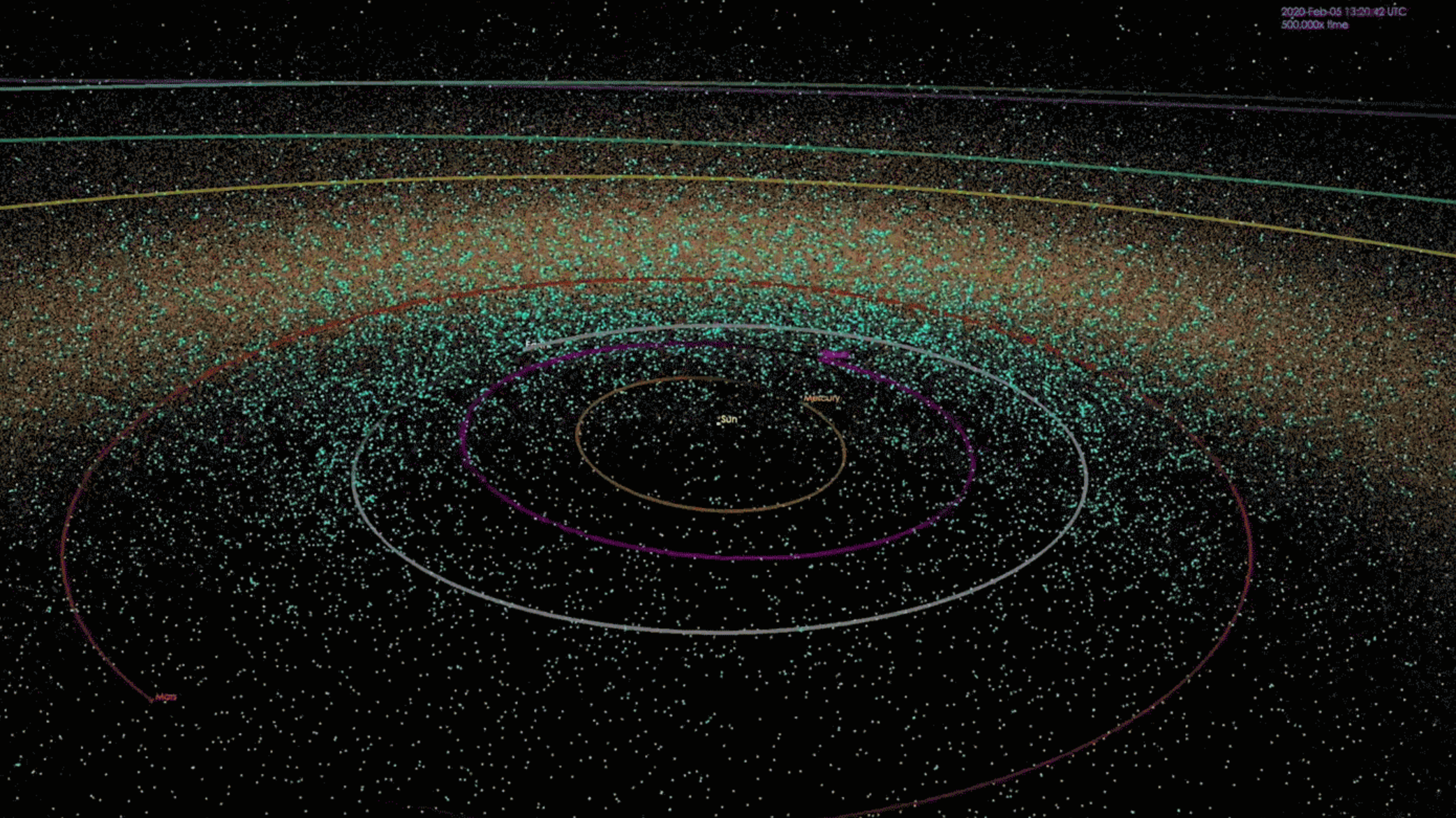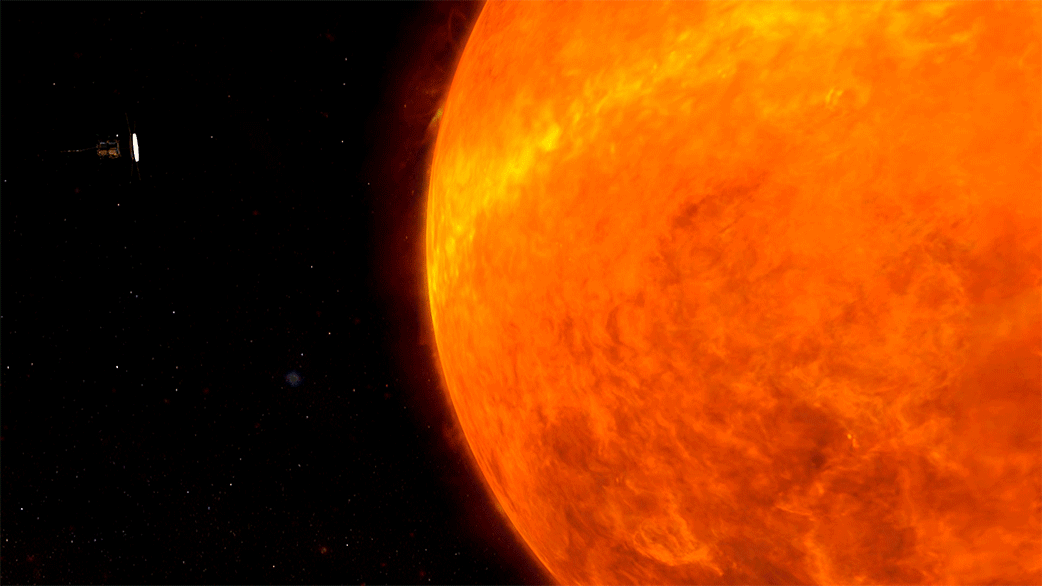For decades, scientists have theorized that beyond the edge of the Solar System, at a distance of up to 50,000 AU (0.79 ly) from the Sun, there lies a massive cloud of icy planetesimals known as the Oort Cloud. Named in honor of Dutch astronomer Jan Oort, this cloud is believed to be where long-term comets originate from. However, to date, no direct evidence has been provided to confirm the Oort Cloud’s existence.
Six Things About Opportunity's Recovery Efforts
NASA's Opportunity rover has been silent since June 10, when a planet-encircling dust storm cut off solar power for the nearly-15-year-old rover. Now that scientists think the global dust storm is "decaying" -- meaning more dust is falling out of the atmosphere than is being raised back into it -- skies might soon clear enough for the solar-powered rover to recharge and attempt to "phone home."
Hubble Paints Picture of the Evolving Universe
Astronomers using the ultraviolet vision of NASA’s Hubble Space Telescope have captured one of the largest panoramic views of the fire and fury of star birth in the distant universe. The field features approximately 15,000 galaxies, about 12,000 of which are forming stars. Hubble’s ultraviolet vision opens a new window on the evolving universe, tracking the birth of stars over the last 11 billion years back to the cosmos’ busiest star-forming period, which happened about 3 billion years after the big bang.
As the Martian dust storm subsides, there’s still no word from opportunity
Martian dust storms are a pretty common occurrence, and generally happen whenever the southern hemisphere is experiencing summer. Though they can begin quite suddenly, these storms typically stay contained to a local area and last only about a few weeks. However, on occasion, Martian dust storms can grow to become global phenomena, covering the entire planet.
Trees are made of human breath
Outside my office window, two skilled workers complete a hard and dirty job. They’re cutting the felled trunk of a tree into small enough pieces to be thrown into the back of a truck with the rest of the chipped remains. I know that this act was ultimately for my own safety. I, like tens of thousands of others over the past 50 years, regularly walked beneath the canopy of that tree.
Jupiter’s magnetic fields may stop its wind bands from going deep into the gas giant
Finding the Happy Medium of Black Holes
Tess practices on a comet before starting on its science operations
On April 18th, 2018, NASA deployed the Transiting Exoplanet Survey Satellite (TESS), a next-generation exoplanet hunting telescope that is expected to find thousands of planets in the coming years. Alongside other next-generation telescopes like the James Webb Space Telescope (JWST), TESS will effectively pick up where space telescopes like Hubbleand Kepler left off.
Water Is Destroyed, Then Reborn in Ultrahot Jupiters
Imagine a place where the weather forecast is always the same: scorching temperatures, relentlessly sunny, and with absolutely zero chance of rain. This hellish scenario exists on the permanent daysides of a type of planet found outside our solar system dubbed an "ultrahot Jupiter." These worlds orbit extremely close to their stars, with one side of the planet permanently facing the star.
The universe’s rate of expansion is in dispute – and we may need new physics to solve it
Next time you eat a blueberry (or chocolate chip) muffin consider what happened to the blueberries in the batter as it was baked. The blueberries started off all squished together, but as the muffin expanded they started to move away from each other. If you could sit on one blueberry you would see all the others moving away from you, but the same would be true for any blueberry you chose. In this sense galaxies are a lot like blueberries.
Exoplanets: how we used chemistry to identify the worlds most likely to host life
Are we alone in the universe? This question has been with us for thousands of years, but it is only now that science is on the cusp of providing a real answer. We now know of dozens of rocky planets orbiting stars other than our sun where, for all we know, life might exist. And soon, with the launch of the James Webb Space Telescope, we will have the first chance to peer into the atmospheres of some of these worlds.
Space Station Experiment Reaches Ultracold Milestone
The International Space Station is officially home to the coolest experiment in space.
NASA's Cold Atom Laboratory (CAL) was installed in the station's U.S. science lab in late May and is now producing clouds of ultracold atoms known as Bose-Einstein condensates. These "BECs" reach temperatures just above absolute zero, the point at which atoms should theoretically stop moving entirely. This is the first time BECs have ever been produced in orbit.
How to grow crops on Mars if we are to live on the red planet
First Successful Test of Einstein’s General Relativity Near Supermassive Black Hole
Observations made with ESO’s Very Large Telescope have for the first time revealed the effects predicted by Einstein’s general relativity on the motion of a star passing through the extreme gravitational field near the supermassive black hole in the centre of the Milky Way. This long-sought result represents the climax of a 26-year-long observation campaign using ESO’s telescopes in Chile.
Discovered: a huge liquid water lake beneath the southern pole of Mars!
Life on Europa would be protected by just a few centimeters of ice
Ever since the Galileo probe provided compelling evidence for the existence of a global ocean beneath the surface of Europa in the 1990s, scientists have wondered when we might be able to send another mission to this icy moon and search for possible signs of life. Most of these mission concepts call for an orbiter or lander than will study Europa’s surface, searching the icy sheet for signs of biosignatures turned up from the interior.
Iceberg Towers Over Greenland Village
Twenty Years of Planetary Defense
NASA’s Center for Near-Earth Object Studies Enters Third Decade.
On March 11, 1998, asteroid astronomers around the world received an ominous message: new observational data on the recently discovered asteroid 1997 XF11 suggested there was a chance that the half-mile-wide (nearly one kilometer) object could hit Earth in 2028.
Who owns the moon? A space lawyer answers
Most likely, this is the best-known picture of a flag ever taken: Buzz Aldrin standing next to the first U.S. flag planted on the Moon. For those who knew their world history, it also rang some alarm bells. Only less than a century ago, back on Earth, planting a national flag in another part of the world still amounted to claiming that territory for the fatherland. Did the Stars and Stripes on the moon signify the establishment of an American colony?
















